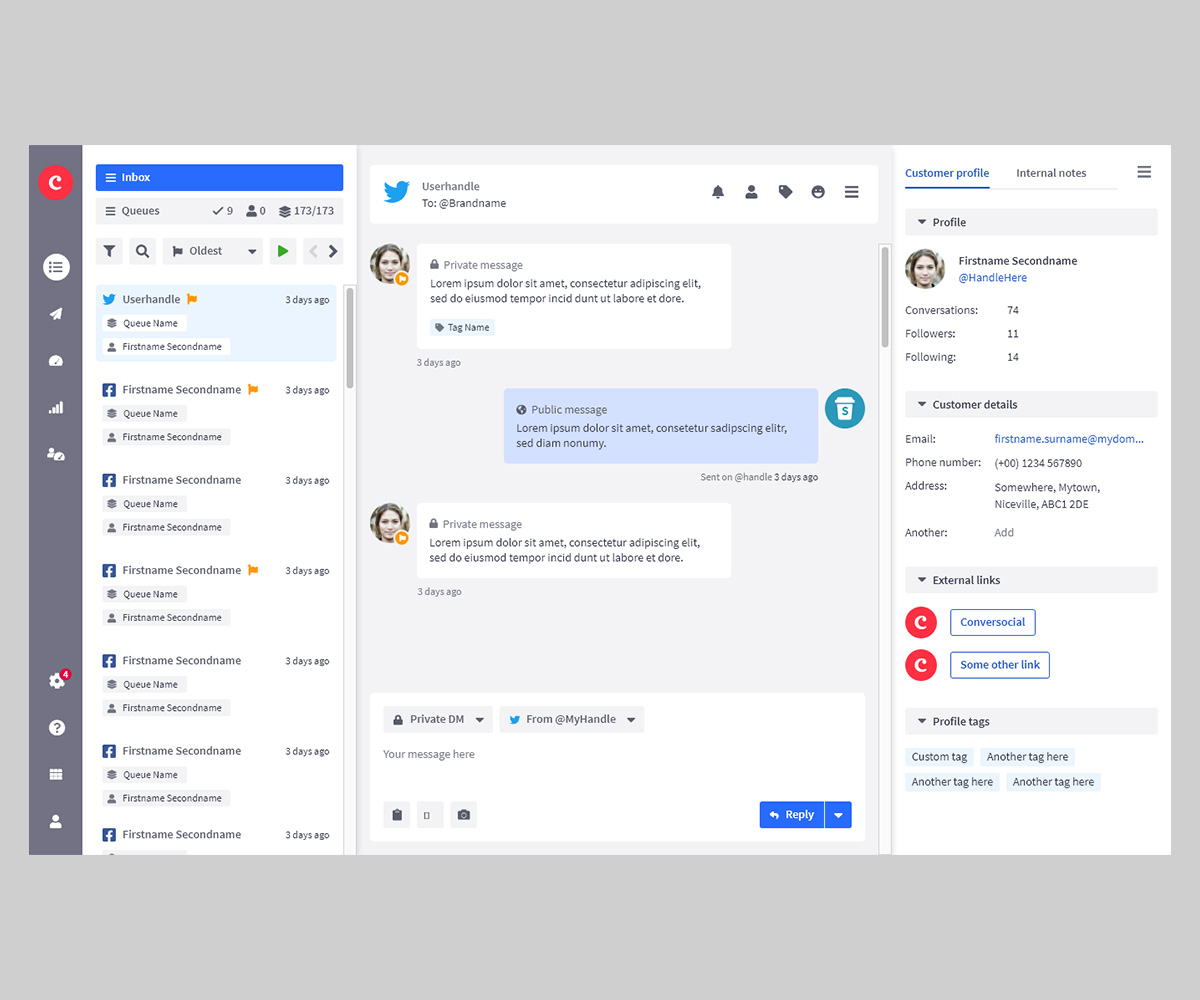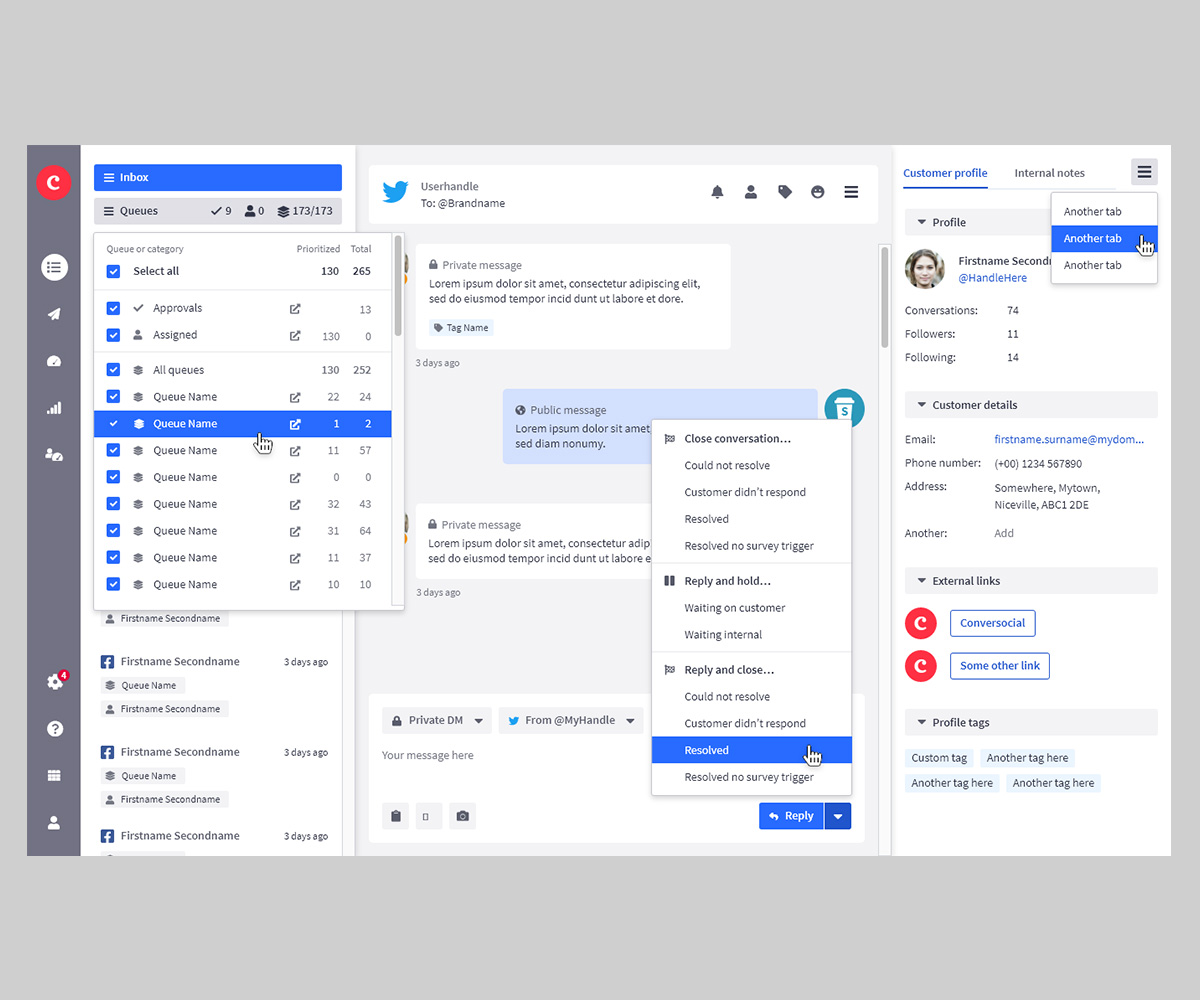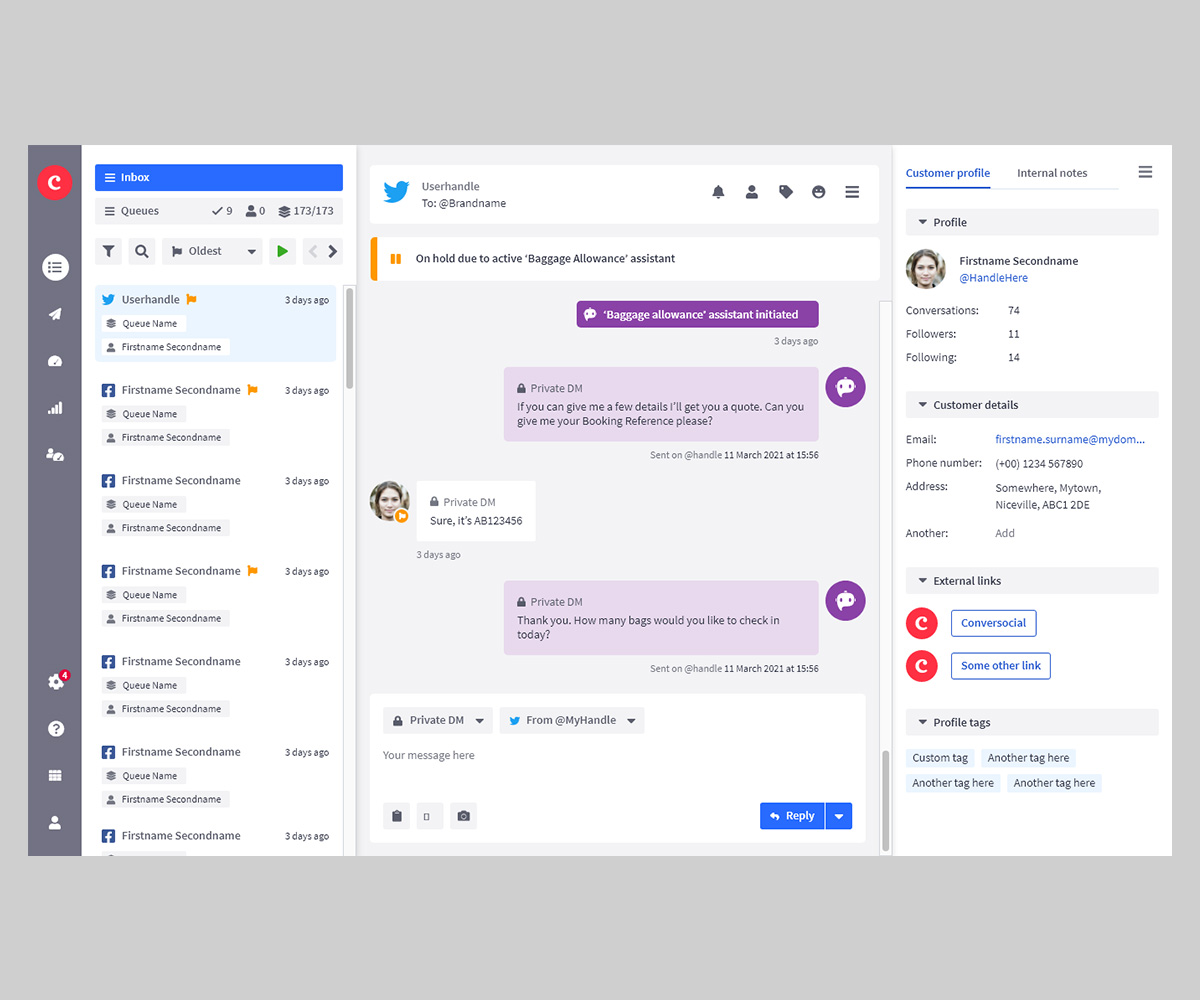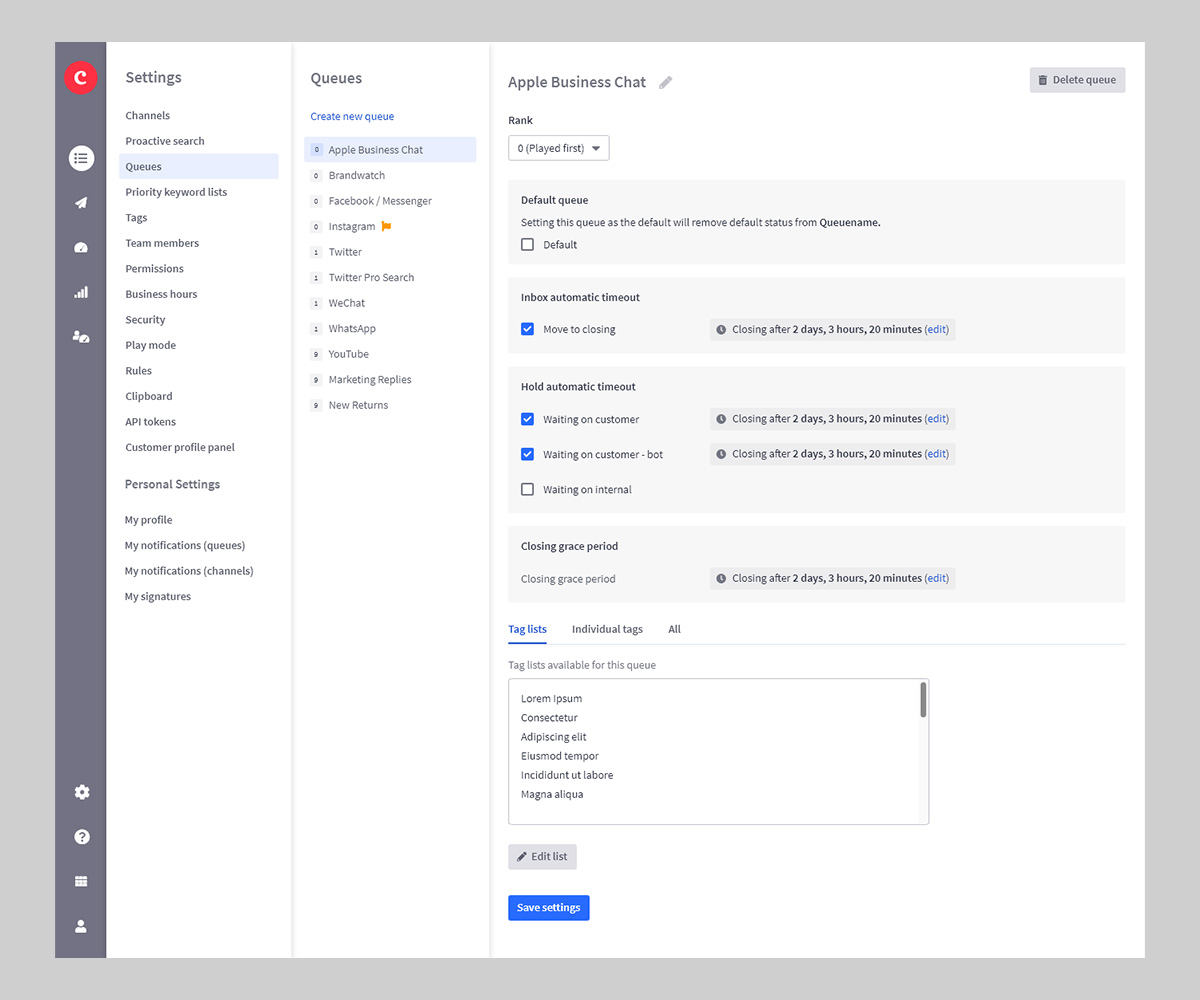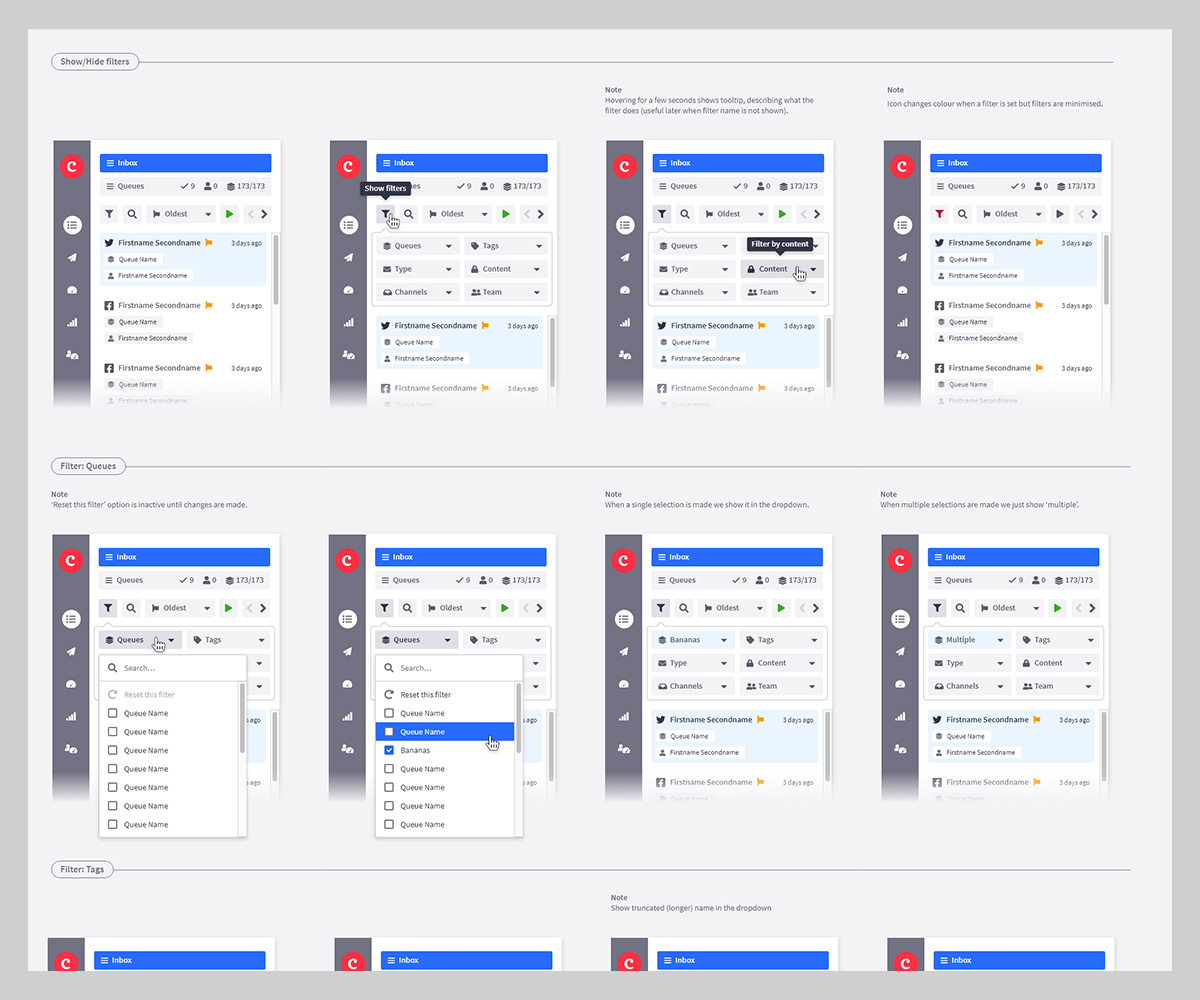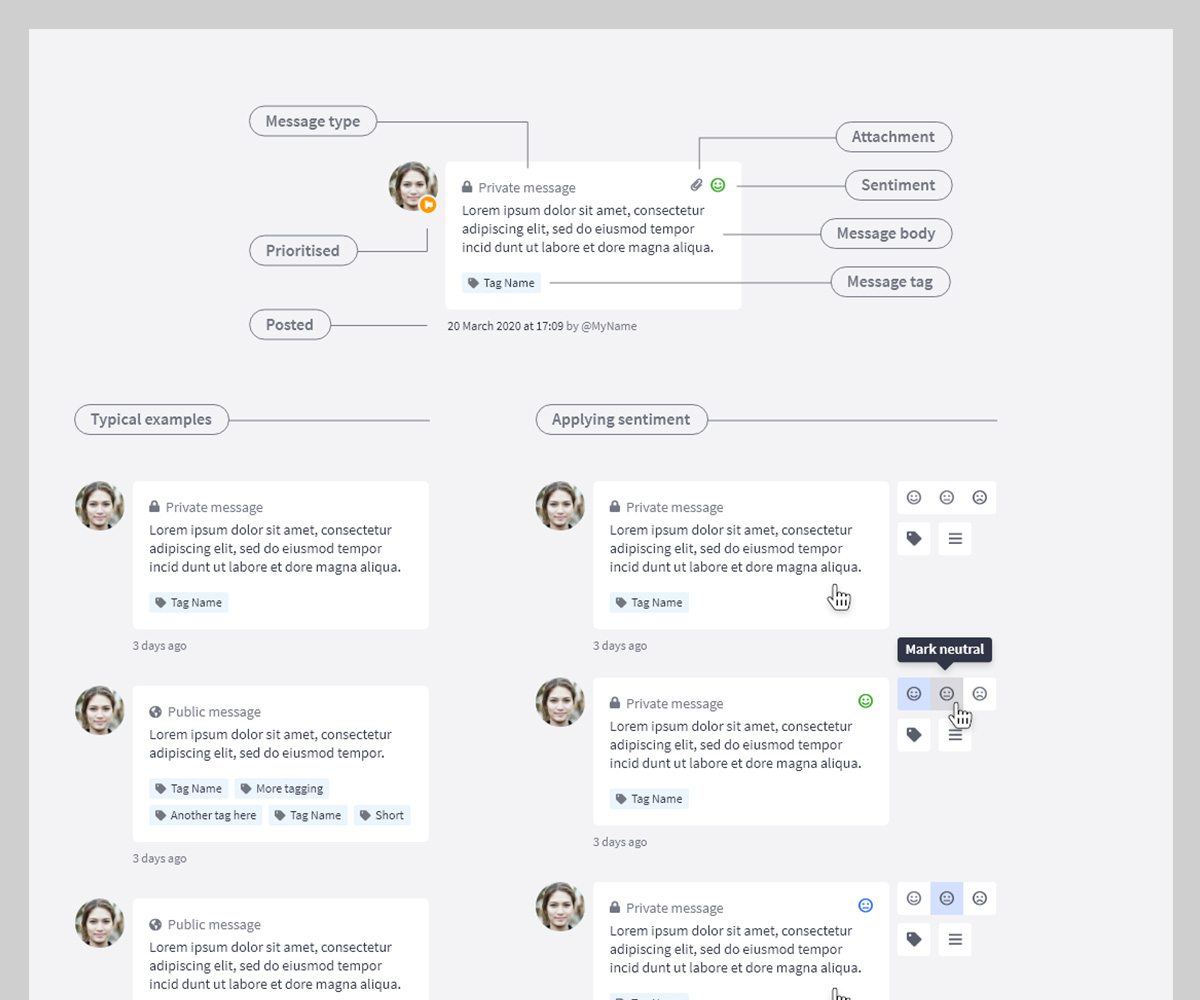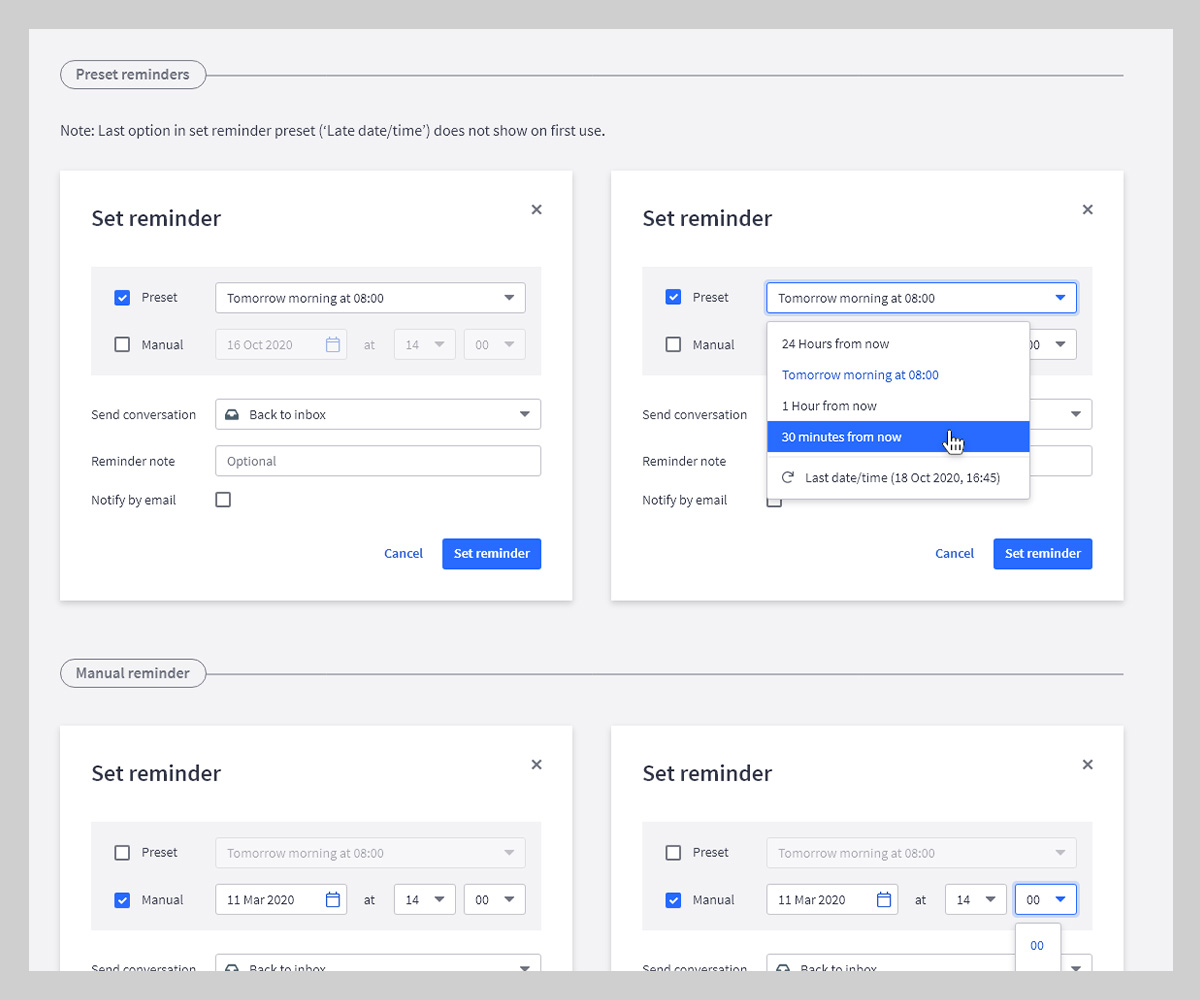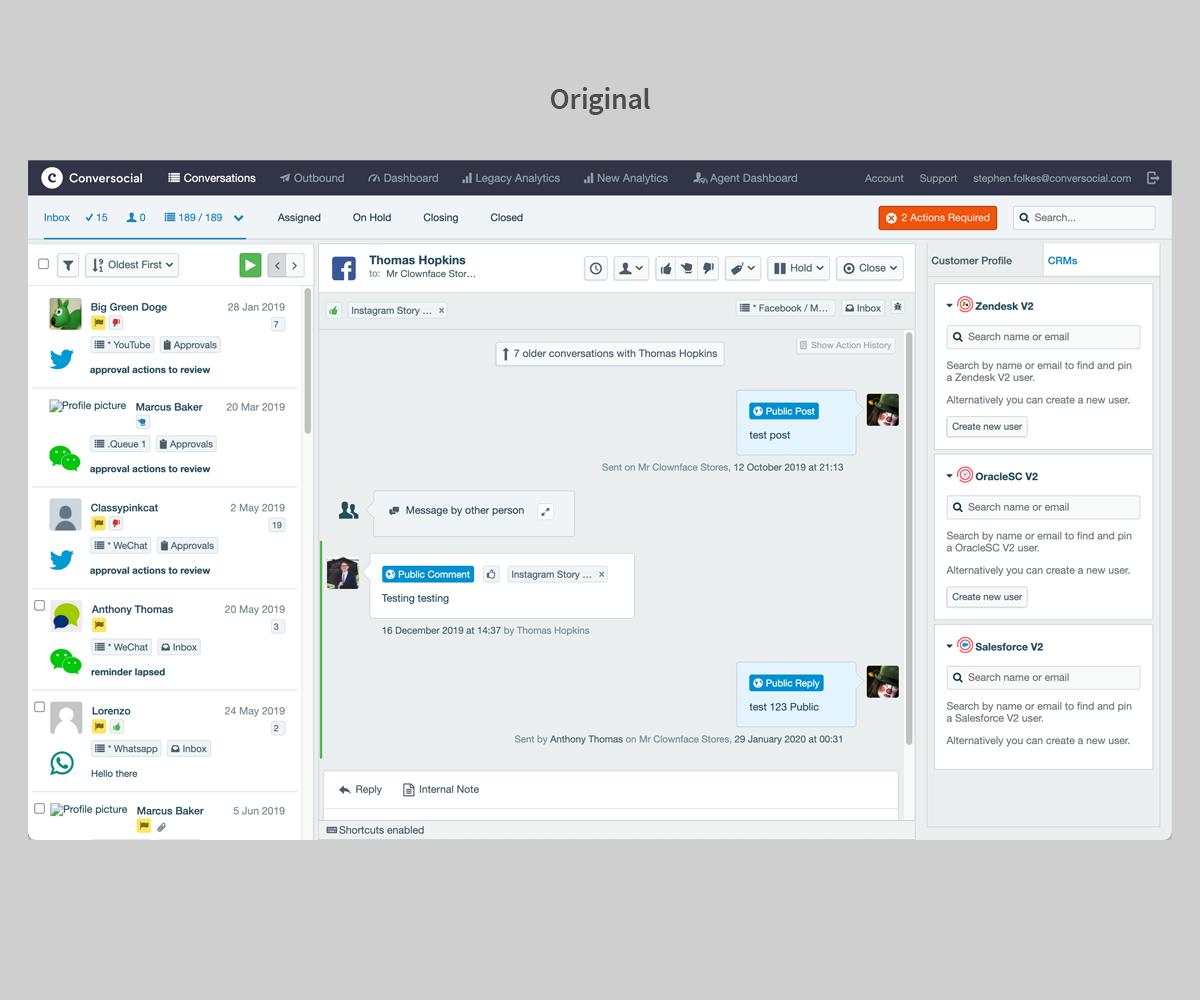Space to breathe.
Agent Workspace is a conversation-based engagement platform, used by hundreds of thousands of customer-service reps across the world’s leading brands including Google, British Airways, Hertz and Facebook.
Six years since the UX/UI was last reviewed in any great depth, a redesign was long overdue.
Challenge
AW is a well established and complex tool interfacing agents with customers across 8+ messaging platforms. Because of the need to bridge with third-party technology, engineering focus has always been on the shifting sands of those platforms, supporting feature changes (and new channels) as they evolve.
Because of this, features have been added organically over time, diluting hierarchy, cluttering the interface, and slowing workflows for agents.
Any redesign also had to get buy-in internally – not an easy task for a company with low design maturity and stretched engineering teams.
Solution
The requirements from a usability standpoint were clear, but we also had the benefit making use of an extensive user research project having taken place 12 months prior, giving us rich qualitative accounts, user shadowing reports and more. Additionally there was a huge pool of up-to-the-minute quantitative data to draw upon and confirm our original objectives.
The product was redesigned with a focus on streamlining the interface to reduce cognitive load, knocking back features which were shown to be less frequently used, and optimising agent workflows.
In tandem we created the Conversocial design system, breaking down the UI into reusable molecules, atoms and patterns – the opportunity of reusability was what we needed to get a green light internally.
Result
The UX/UI was completed as planned, engineering prototypes were successful – we also emerged with a new design system (see case study) which we used to roll out to the other main products at considerable speed.
However, as we approached the next phase of user testing and full engineering planning, Conversocial was acquired and so the implementation phase goes uncompleted.
Responsibilities
- Defining UX requirements, user journeys, wireframes
- User research/testing
- Proof of concept (high-level design)
- Detailed UI (end to end)
- Briefing dev teams
